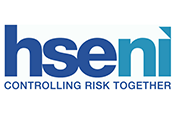Safety of workplace machinery, equipment and tools
Use hand-held tools safely
Anyone who uses a hand-held tool or holds materials being worked by hand-fed machines may be at risk of injury, either accidentally, through misuse or through equipment failure.
Hand-arm vibration syndrome
Hand-arm vibration is caused by the use of hand-operated power tools. Employees who regularly use these could suffer permanent injury known as hand-arm vibration syndrome (HAVS). This can cause severe pain and permanent loss of feeling in the fingers and hands.
There are many types of equipment that can cause HAVS, including:
- chainsaws
- power hammers
- hand-held power drills
- sander
- lawnmowers
- strimmers
- road drills
- hand-fed equipment, e.g. pedestal linishers, grinders, mops
Download the guide to health risks from hand-arm vibration (PDF, 154K). To find out about vibration and repetitive strain injury (RSI), see prevent repetitive strain injury at work.
Reducing risks from hand-held tools
Apart from hand-arm vibration, there's a range of other risks for employees when using hand-held tools. For example, noise, puncture wounds and cuts caused by sharp equipment such as:
- scissors
- needles
- paper guillotines
- knives
- chisels
- saws
- planes
- screwdrivers
As far as possible, use guards and provide protective clothing, eg masks, ear defenders and gloves. Organise the use of tools during work operations and their storage when not in use.
Heat-producing equipment such as blowtorches and irons can cause burns and permanent scarring. Always provide protective clothing and regularly test equipment to make sure it's safe.
To minimise injury from employees using hand-held tools, you should:
- assess and then manage the risks involved
- make sure the tools are suitable for the task and are well-maintained
- train all employees to use and store the equipment appropriately
- plan work schedules to minimise vibration exposures and make sure exposures are below the ELV
- consider whether employees could use different equipment which poses fewer risks
- provide health surveillance when exposures are at or above the EAV and in other circumstances where there is risk, for example, after diagnosis of HAVS and exposure continues but below the EAV
- EMAS028 9034 7487
